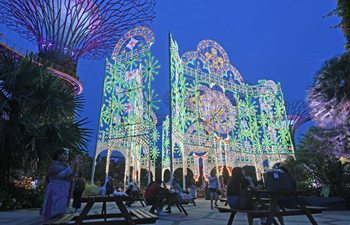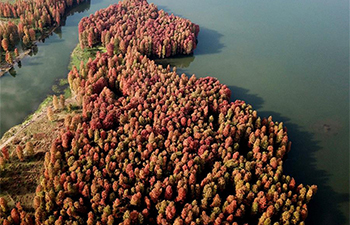CANBERRA, Nov. 28 (Xinhua) -- Australia's Northern Territory (NT) government has committed to an ambitious plan to convert to 50 percent renewable energy by 2030.
Residents will be the beneficiaries of the drive towards clean energy, with the government offering grants of up to 750 U.S. dollars to households to undertake energy efficient measures.
These include installing solar panels, batteries, solar pool pumps and hot water, smart meters, and energy efficient lighting and appliances.
The Australian Labor Party (ALP) government has accepted outright or in principle all 11 recommendations contained in the Roadmap to Renewables report, a blueprint to move from 4 percent renewables to 50 percent by 2030.
The Territory is currently 96 percent reliant on gas and diesel.
Known colloquially as the Top End, the Northern Territory covers an area of 1.35 million square km, about one-sixth of the Australian continent, and in September 2015 had a population of almost 244,500, according to Australian Bureau of Statistics.
The report says the move to greater renewable energy would have knock-on benefits, placing downward pressure on wholesale electricity prices, which could stimulate "significant economic development, job creation, industry growth and new investment."
Northern Territory Chief Minister Michael Gunner said on Monday night his administration was creating a new energy market to ensure increasing levels of renewables were integrated into the grid in a stable way.
Solar energy is already being delivered to 30 remote indigenous communities to reduce their reliance on diesel under a joint 41.8 million-U.S. dollar federal and Northern Territory government-funded program.
The report also recommends that Alice Springs, about 1,500 km south of the territory capital Darwin, become a hub for solar energy research and development.
The town of about 30,000 inhabitants plunged into darkness earlier this month during an eight-hour blackout.

















